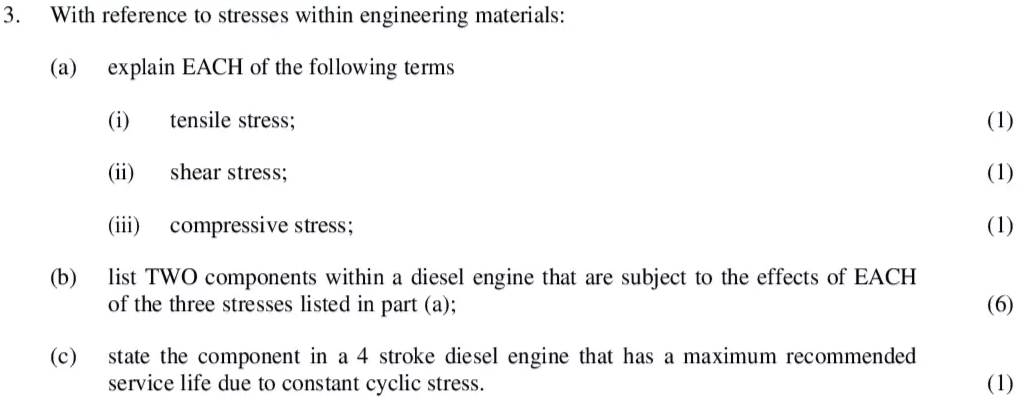Study Notes Quiz

With reference to the hull of a vessel:
(a) define the term fatigue;(3)
(b) describe how fatigue stress occurs whilst in a seaway;(3)
(c) state the effect of fatigue on the hull material.(4)

With reference to fatigue failure of components:
(a) describe how material fatigue testing is carried out in the laboratory. (2)
(b) sketch the surface appearance of a fatigue fracture;(2)
(c) describe the THREE stages of the failure;(3)
(d) list the methods available on board to limit the possibility of fatigue failure to a propeller shaft.(3)

(a) List FOUR methods for non-destructive crack detection.(4)
(b) Describe TWO procedures from the methods listed in part (a). (6)

(a) Describe TWO destructive tests that a sample of metal intended for the manufacture of a propeller shaft, would undergo before being accepted by a classification society.(6)
(b) Explain the term safety coefficient (factor of safety), stating why it is required.(3)
(c) State a typical safety coefficient designed into a propeller shaft.(1)

With reference to the installation of copper pipes in engine cooling systems:
(a) describe THREE possible causes for their premature failure;(6)
(b) outline FOUR recommendations for the installation of copper pipes (4)

(a) Describe how a Brinell hardness test is carried out.(3)
(b) With reference to a ball race bearing, explain EACH of the following terms:
(i) brinelling;(2)
(ii) false brinelling.(2)
(c) Explain how false brinelling can be reduced in practice.(3)
